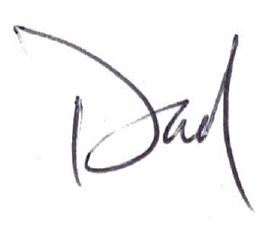
Coming from fairy, primary school (which is what I used to call the Waldorf education), my daughter’s increasing grade meant an increasing emphasis on academics. My daughter has been privileged in that she had a choice to go to the best schools whether it was private or public alternative. Her schools catered to her learning modality and the curriculum went above and beyond the standard syllabus. When she got accepted into an International Baccalaureate program in a public high school, she jumped at the chance. She would be academically challenged and her peer group are like herself, just a bunch of regular kids from regular folks without all the pretention and pressures of excess affluence.
Setting aside all the social aspect of a new high school environment, she quickly discovered that there were three types of students in her school: those who didn’t want to be there and will eventually drop out when they are legally able to; those who will do sufficiently well and will sufficiently graduate and move onto sufficiently successful jobs and job opportunities; and those who will use this high school as a springboard into a limitless unknown. My daughter being my kid, chooses to surround herself with kids in the latter group.
Her school year is broken into 2 semesters with 4 periods each day. And the courses range from PhysEd or Music to Humanities to STEM. There’s a lot of structured, academic ground to cover in each course and that doesn’t leave much for self-guided learning, unlike in her middle school, where the entire class spent 3 months running a Mock City Hall or Model U.N. simulations. In high school, each subject dives deeper not simply because there’s more content to cover (i.e. general history) but it prepares students for university who want to pursue specific programs like law and medicine.
![]()
Just like a karate black belt, when he punches a board, he doesn’t end his thrust at the board; he punches ‘through’ the board. Learning is like that.
After two months of high school and having received the results of her first mid-term exams, she was disappointed that her usual “A’s” were very elusive indeed. “Dad, I only got an 78% in math!” She was dejected. As sympathetic as I can muster, I said that the best students will see a 10 to 15% drop in their grades in Grade 9. It’s supposed to be harder! In fact, Grade 9 is a weeding year. Add to this, my daughter was in an international program and they teach to a different standard. So, while the benefits of IB are more meaningful teaching and possible exemption from select first year class in university, the cost is its rigor. Then I said, if it makes you feel any better, if you were in a regular program at a regular school, you’ll be achieving 90% or more. Do you want easy? She paused and confirmed my belief.
Don’t be so focused on the grade or the percentage you get back from the teacher, I continued. That’s only one indicator of how well you responded to the teacher’s question. Aim for full understanding of the material at hand. I gave her an example of me taking my car to the mechanic. If the mechanic installed brand new brake pads, would that the satisfactory? Maybe not since rotors might also need to be looked at. And even if both are installed properly, there are other systems that work in concert, like brake lines, fluids, alignment, etc. So my mechanic’s knowledge needs to be continually upgraded through experience.
“Is this what it means when some of my teacher says, ‘we are learning to learn’?” asked my daughter. I nodded in full agreement, then offered, Don’t go through the motions of studying what was taught and fall into the trap of saying ‘the teacher didn’t cover this question.’ There’s no way a teacher can teach all of World History in a single semester. So, try to learn more than what’s on the syllabus. An architect doesn’t build a bridge that works 80% of the time, or a doctor only cures 90% of her patients. Their goal is far more comprehensive. Just like a karate black belt, when he punches a board, he doesn’t end his thrust at the board; he punches ‘through’ the board. Learning is like that.

